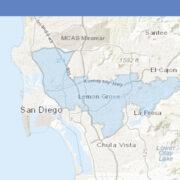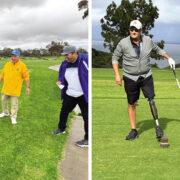We have covered in previous articles the different ways of acquiring U.S. citizenship at birth. Aside from birth, the other means of acquiring U.S. citizenship is through naturalization. Under INA 101(a)(23), naturalization refers to the act of conferring nationality on a person after birth. Naturalization includes: (1) naturalization of an individual adult; (2) collective naturalization of large groups through legislation, usually after the acquisition of new territory or other historical event; and (3) expedited naturalization such as when a child derives citizenship through a parent’s naturalization. In this article, we shall limit our discussions to expedited naturalizations. INA 320 and INA 322 are some forms of expedited naturalization.
Under INA 321, which has been repealed but which was in effect from December 25, 1952 until February 26, 2001, a child would derive U.S. citizenship under the following conditions: (1) both parents, a surviving parent, a parent who has legal custody over the child after legal separation, or the mother of a child born out of wedlock, has naturalized; (2) the child is under 18 years of age; and (3) the child was lawfully admitted into the U.S. as a permanent resident. If such child was living outside the U.S., he automatically acquired citizenship on the date he was admitted into the U.S. for permanent residence. If this child was already living in the U.S., he acquired citizenship on the date the last condition was fulfilled.
On February 27, 2001, the Child Citizenship Act of 2000 took effect. It repealed INA 321 and it amended INA 320 and INA 322. It applies to children who were under the age of 18 on February 27, 2001.
Under the current version of INA 320, a child would derive U.S. citizenship under the following conditions: (1) at least one parent is a U.S. citizen (USC) by birth or naturalization; (2) the child is under 18; and (3) the child is residing in the U.S. under the legal and physical custody of the USC parent pursuant to lawful admission as a permanent resident. The child would automatically acquire citizenship on the date the last condition is fulfilled.
For example, let’s say A’s son B was born abroad. In 2005, A became a lawful permanent resident (LPR). In 2010, when B was 10 years old, A filed an immigrant petition for B. In 2011, B immigrated to the U.S. and became an LPR. In 2012, A became a naturalized USC. B automatically became a USC in 2012 when A naturalized because this was the time when the last requirement for acquisition of citizenship was fulfilled. B was under 18 and was an LPR when A naturalized.
INA 322 is another form of expedited naturalization. Under the revised INA 322, a child who did not acquire citizenship at birth under INA 301 and INA 309 or did not derive citizenship under INA 320, may acquire citizenship under the following conditions: (1) at least one parent is a USC; (2) the USC parent has been physically present in the U.S. or its outlying possession for a period of not less than 5 years, 2 years of which were after the age of 14; or such USC parent has a USC parent (i.e. the grandparent of the child) who has been physically present in the U.S. or its outlying possession for a period of not less than 5 years, 2 years of which were after the age of 14; (3) the child is under 18; (4) the child is residing outside the U.S. in the legal and physical custody of the USC parent; and (5) the child is temporarily present in the U.S. pursuant to a lawful admission and is maintaining such status.
For example, C is a USC born in the U.S. in 1980. In 1981, C’s parents brought him to the Philippines. In 2000, C’s wife gave birth to their son D in the Philippines. In 2001, C moved back to the U.S. In 2010, D entered the U.S. with his mother on a visitor’s visa. C could apply for a certificate of citizenship for D pursuant to INA 322 because: (1) C has been living in the U.S. for at least 5 years; (2) D is under 18; (3) D is under C’s custody since he’s married to D’s mother; and (4) D is in the U.S. with lawful status.
The length of physical presence required for parents under INA 322 is similar to that under INA 301(g). Under INA 301(g), a child born abroad to one USC parent and one alien parent is a USC by birth if the USC parent has been physically present in the U.S. or its outlying possession for a continuous period of 5 years prior to the child’s birth, 2 years of which were after the age of 14.
However, in our example, D did not acquire citizenship under INA 301(g) because C was not physically present in the U.S. prior to D’s birth since C stayed in the U.S. mostly after C’s birth. This small detail makes a big difference.




